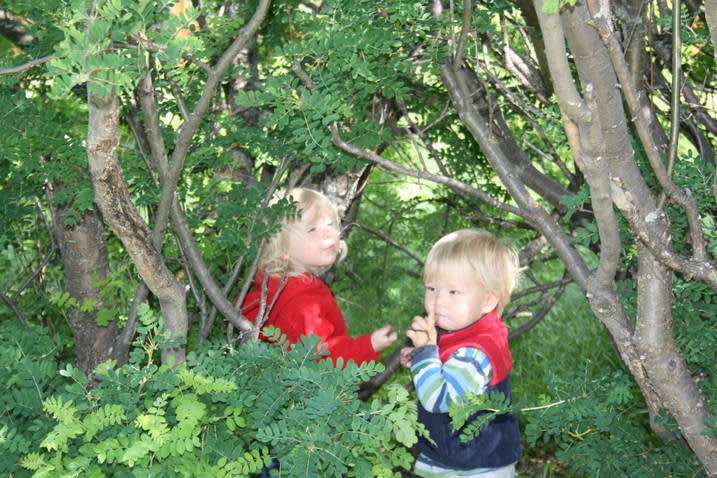Get Kids Back into the Outdoors with Engaging Activities
Andy and Tami McDaniels 10.30.12

During the past two decades, we have witnessed kids’ love for the outdoors being replaced by a love for electronic gadgets. According to the National Wildlife Federation, “The negative impact of decreased time outdoors includes a doubling of the childhood obesity rate–accompanied by an incremental hundred billion dollar cost to our health care system–as well as declining creativity, concentration and social skills.”
Parents, grandparents, teachers, and caregivers (in short, all of us) should make it a priority to get kids back into the outdoors. Taking kids on fishing and hunting trips is a great way to instill a love of the outdoors in a child. However, it may not be practical for everyone to engage in those activities regularly, and that’s okay. The outdoors is a classroom unto itself; just stepping outside presents a learning opportunity and adventure.
Perhaps you’ve encouraged your child to leave the computer or game station in exchange for some sunshine and fresh air only to be told in return, “There’s nothing to do outside.” You then reply something like, “Why don’t you ride your bike, go for a walk, or explore the neighborhood.” With eyes focused on computer, television, or phone screen, the child responds, “Those things are all boring.”
As a mother and teacher, I’ve learned to engage my kids and students in an activity, not by telling, but by doing. Chances are good that if a child doesn’t like to be outside, telling him/her to go outside isn’t going to change the situation. However, with minimal preparation on your part, you can plan several simple activities in advance that you and your kids can do together in the outdoors. Each activity can be adjusted to meet various age levels and circumstances.
Activity #1: Make Leaf Rubbings
Materials: Crayon pieces, copy paper or tissue paper in fall colors, white construction paper, fresh leaves, and glue.
- With the exception of the leaves, gather all materials in advance.
- Take a walk through the neighborhood or local park to collect a variety of fresh leaves.
- Place a leaf on a hard, flat surface vein side up. Then place a single piece of copy paper or tissue paper on top of the leaf and rub over the top of the leaf with the side of the crayon.
- Repeat step three on different colors of paper.
- Tear or cut out each leaf shape.
- Glue each leaf shape onto the construction paper.
To make this activity more challenging, have kids identify the leaves by common name and scientific name. Write the names under each of the rubbings.
Activity #2: Identify Animal Tracks
Materials: Books on animal tracks or printed pictures of tracks, journal or paper, pencil, and backpack.
- Start by researching animal tracks common to the area you will be exploring. This could involve taking a trip to the library to select books on the subject or using the Internet to locate and print pictures of the tracks.
- Pack the books or printed pictures in a backpack to take with you to your chosen area of exploration.
- Walk, bike, or drive to the area and look for tracks.
- Record the tracks you find by drawing pictures of them in the journal.
- Try to identify all of the tracks.
- Look at the books or pictures to see if the tracks were identified correctly.
This is a great activity to do after it rains or snows; the tracks will be easier to find.
Activity #3: Observe the Night Sky
Materials: Blanket, star gazing guide, and flashlight.
- Find a star guide at the library or on the Internet and learn about the night sky.
- On a clear, dark night, preferably when there is no moon, go outdoors and try to identify the constellations in the sky.
- Start by finding the North Star, and then use the flashlight to refer to the star guide to locate and identify other constellations.
An excuse to stay up past their bedtime…I think you just got their attention.
As these activities demonstrate, you don’t need a lot of stuff, just a little creativity and planning, to help kids connect to the natural world. The key for us as adults is to be involved in the process. It’s not enough to tell kids to go outside. We need to get out there with them. These shared outdoor experiences have the potential to strengthen the bond between the adult and child and instill a love of the outdoors.

